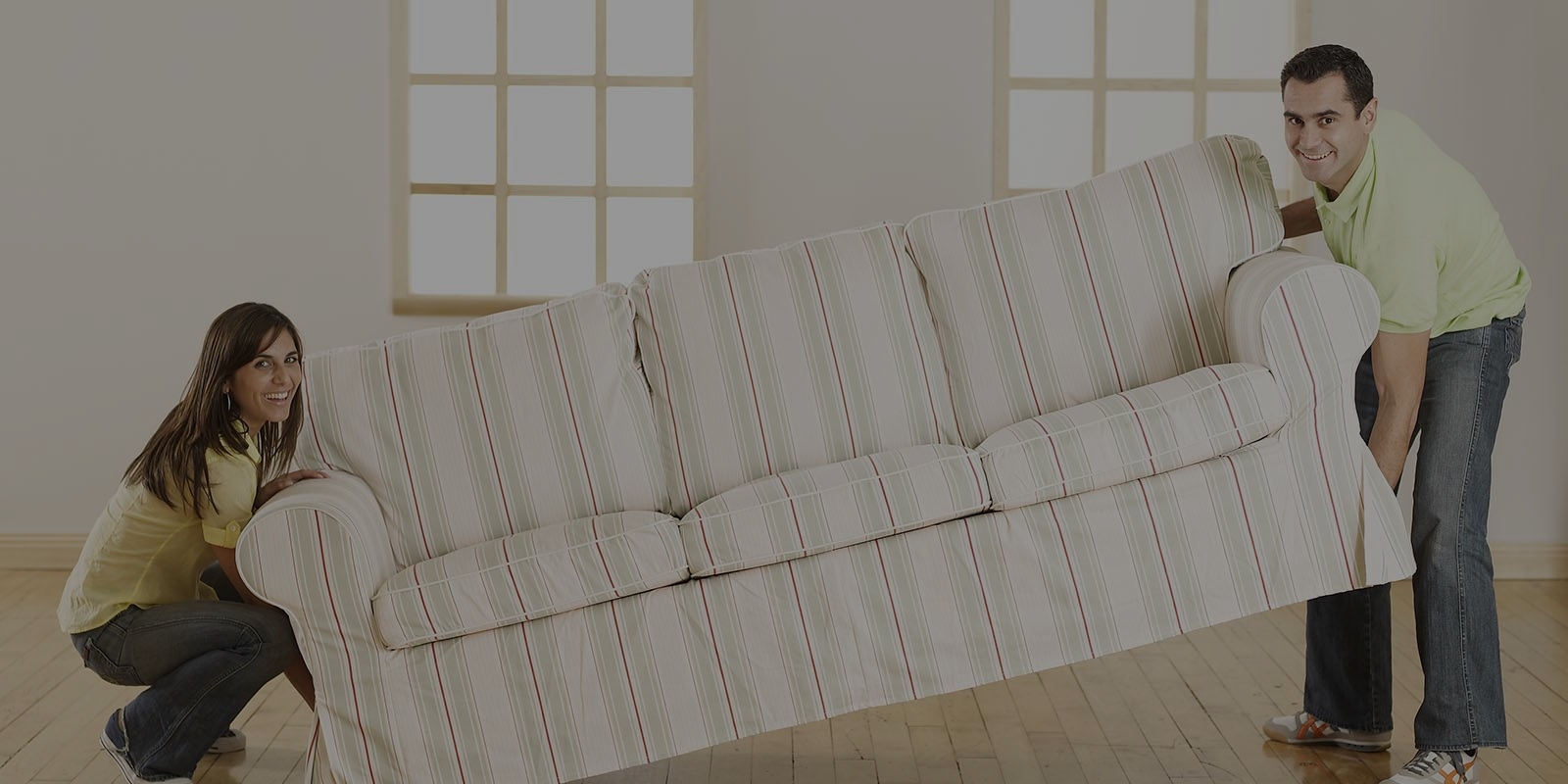Secure Your Sofa's Future: Expert Storage Tips
Posted on 17/05/2025
Secure Your Sofa's Future: Expert Storage Tips
Are you worried about your sofa's safety during renovations, moving, or long-term storage? Whether you own a luxurious leather sectional or a cozy fabric loveseat, safeguarding your investment is crucial. In this comprehensive guide, you'll discover how to secure your sofa's future with expert storage tips--ensuring it stays in pristine condition for years to come.
Why Storing Your Sofa Properly Matters
Your sofa isn't just another piece of furniture; it's the centerpiece of your living room, a place of comfort, and often a significant financial investment. Improper storage can lead to irreversible damage such as mildew, mold, pest infestations, warping, or fabric deterioration. Understanding the right techniques to store your couch can extend its lifespan and maintain its beauty.
Common Reasons for Storing a Sofa
- Moving to a new home and needing temporary storage
- Home renovations requiring a clutter-free space
- Seasonal changes--protecting your sofa during humid, rainy, or extremely cold weather
- Downsizing or inheriting furniture
- Traveling long-term or renting your home

Choosing the Right Storage Location
Finding the ideal storage spot is the first step in securing your sofa's future. Various options exist, each with strengths and weaknesses:
1. Climate-Controlled Storage Units
Climate-controlled storage is highly recommended for sofas, especially those with leather or specialty fabrics. These units maintain a stable temperature and humidity, preventing issues like mold, mildew, and warping.
- Pros: Best protection against environmental damage
- Cons: Higher cost compared to regular units
2. Self-Storage Units
Standard self-storage units are more affordable, but may expose your sofa to temperature and humidity fluctuations. If you choose this route, extra precautions are needed (see our protection tips below).
3. Home Garages, Basements, Attics
While convenient, garages and basements can be damp and hospitable to pests, while attics may get exceedingly hot or cold. If using home spaces, invest in protective coverings and moisture-absorbing products.
Preparing Your Sofa for Storage: Step-by-Step Guide
Proper preparation is the key to ensuring your couch or sofa stays in excellent condition throughout its time in storage. Follow these expert steps for optimal results:
Step 1: Clean Thoroughly
- Vacuum all surfaces to remove dust, dirt, and crumbs from cushions, armrests, and seams.
- For fabric sofas: Spot clean stains with appropriate upholstery cleaner. Allow ample time to fully dry.
- For leather sofas: Wipe down using a damp cloth and mild soap. Dry, and apply leather conditioner to maintain suppleness.
Tip: Any residual moisture can promote mold growth, so ensure your sofa is completely dry before moving to the next step.
Step 2: Disassemble When Possible
- Remove legs, cushions, and detachable arms to save space and prevent breakage.
- Place small parts, screws, and hardware in labeled bags taped to the sofa frame.
- Cushions should be stored in breathable fabric bags, not plastic, to allow airflow.
Disassembling reduces pressure on joints and frame, decreasing the chance of structural warping.
Step 3: Wrap & Protect Your Sofa
Proper wrapping ensures your sofa is shielded from dust, pests, and accidental scrapes:
- First, cover with soft, breathable furniture blankets or moving pads.
- Avoid direct plastic wrap on fabric, as it can trap moisture. If using plastic, leave areas for air circulation.
- For leather: Use a cotton sheet or specialized leather cover first, then apply protective blankets. Avoid excessive plastic to prevent condensation.
Securing your couch with the right coverings is a vital part of storing your sofa safely.
Step 4: Protect from Moisture and Pests
- Place silica gel packets or other moisture absorbers underneath and inside cushion storage bags.
- Consider eco-friendly pest repellents, like cedar blocks or lavender sachets, to deter insects and rodents.
Step 5: Move with Care
- Use dollies or moving straps to transport the sofa. Lift--don't drag--it to avoid fabric tears and frame damage.
- Get help for heavy or bulky couches to prevent accidents and injuries.
How to Store a Sofa in Storage Units: Best Practices
Even the best preparation can be undone by poor storage practices. Here's how to store furniture like an expert:
1. Avoid Direct Contact with the Floor
Never place your sofa directly on concrete or bare surfaces.
- Use wooden pallets, risers, or foam blocks to elevate the sofa. This protects against accidental water leaks and improves air circulation.
2. Do Not Stack Heavy Items on the Sofa
- Avoid crushing cushions, springs, or the structural frame. Place lighter goods on top, or better yet, leave the sofa uncovered and accessible.
3. Arrange for Airflow
- Leave space between the sofa and storage unit walls.
- Store cushions separately, upright or flat, to prevent flattening.
4. Regularly Inspect and Refresh
- If storing long-term, visit every 1-2 months to check for pests, moisture, or musty odors.
- Rotate cushions and covers to prevent uneven compression.
Expert Tips for Different Types of Sofas
1. Caring for Leather Sofas in Storage
- Condition the leather before storing to keep it supple.
- Avoid prolonged contact with plastic wrap.
- Maintain steady temperature and humidity to prevent cracking.
2. Storing Fabric Sofas
- Ensure the fabric is completely clean and dry.
- Use breathable cotton sheets for covering rather than plastic.
- Protect from sun exposure if the storage space has windows.
3. Storing Sleeper Sofas and Sectionals
- Fold and store mattresses separately, standing upright if possible.
- Keep all parts together and labeled for easy reassembly.
What to Avoid When Storing Sofas
Many sofa owners make common mistakes that can ruin their beloved furniture. To secure your sofa's future, avoid these pitfalls:
- Don't use colored newspaper or printed materials... Ink can bleed and permanently stain fabric.
- Never shrink-wrap a damp sofa. Trapped moisture leads to mold and foul odors.
- Don't leave the sofa near direct sunlight--even in storage units--as UV rays can fade both leather and fabric.
- Don't stack boxes or furniture on top of your sofa for long periods.
Additional Ways to Secure Your Couch for Future Use
- Insurance: If your sofa is valuable, consider storage insurance to protect against theft, fire, or accidents.
- Inventory List: Create a list with photos of your furniture before storage. This helps if you need to file insurance claims.
- Professional Help: For valuable or antique sofas, professional moving and packing services ensure the safest handling and storage.
FAQs: Storing and Protecting Your Sofa
How long can a sofa stay in storage?
With proper cleaning, wrapping, and storage conditions, your sofa can remain in storage for several months to several years without damage.
Can I store my sofa in my garage?
Yes, but garages are often more humid and prone to pests than professional storage. If you must use a garage, take extra moisture and pest precautions.
Is it okay to wrap a leather sofa in plastic?
It's best to use a layer of breathable fabric under the plastic. Plastic traps moisture, which can damage leather.
Can I store my sofa outdoors under a tarp?
Outdoor storage offers minimal protection and is not recommended. Moisture, pests, and extreme temperatures can quickly destroy your sofa.

Conclusion: Secure Your Sofa's Future with Expert Storage Techniques
Your sofa deserves the best care, especially when you're not there to use it every day. By following these expert storage tips--cleaning, disassembling, wrapping, and carefully storing in a dry, secure location--you can ensure your couch remains comfortable and beautiful for years.
Securing your sofa's future isn't complicated, but it does require a thoughtful approach and a bit of preparation. Treat your sofa well today, and it will pay you back in comfort, style, and service for years to come.
Related Resources
- How to Clean and Maintain Your Sofa
- The Best Storage Units for Furniture
- Moving Checklists for Homeowners
Now that you know how to store your sofa for the future, you can relax and focus on what matters most--making new memories when it returns to your home, spotless and safe!
```






